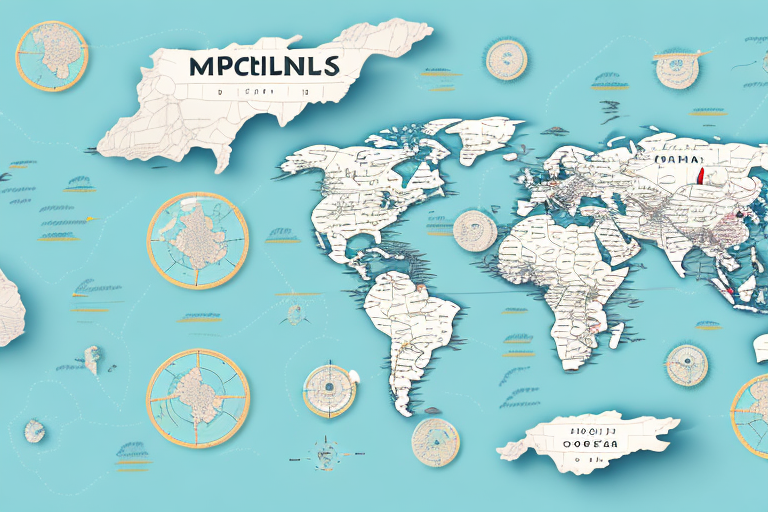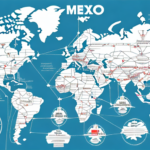Understanding Economy Shipping: An Overview
Economy shipping has become a preferred choice for many small businesses and individuals due to its cost-effectiveness. Unlike expedited shipping methods, economy shipping offers a more affordable way to transport goods, making it an attractive option for those looking to minimize shipping expenses. In this section, we will explore the fundamental aspects of economy shipping, including its definition, typical use cases, and its growing popularity in the logistics industry.
The Benefits and Drawbacks of Economy Shipping
Cost-Effectiveness
The primary advantage of economy shipping is its affordability. By prioritizing cost over speed, economy shipping allows businesses and individuals to transport goods without incurring high shipping fees. According to the 2023 Shipping Cost Report, economy shipping can reduce shipping expenses by up to 30% compared to standard shipping options.
Environmental Impact
Economy shipping often utilizes larger freight trucks, which can transport more goods in a single trip. This greater capacity reduces the number of trips required, subsequently lowering carbon emissions. Additionally, some economy shipping providers participate in carbon offset programs, further diminishing their environmental footprint.
Slower Transit Times
A significant drawback of economy shipping is the extended delivery timeframe. Economy shipments typically take between 5-10 business days, depending on the distance and carrier, compared to 1-3 days for express shipping. This delay can be a disadvantage for those needing swift delivery.
Limited Tracking and Services
Economy shipping may offer basic tracking capabilities but often lacks the comprehensive tracking and additional services such as signature confirmation or insurance that are available with premium shipping options. This limitation can be a concern for high-value or fragile items.
Comparing Economy Shipping with Other Shipping Options
Express vs. Economy Shipping
Express shipping is designed for speed, ensuring that packages arrive within a few days. In contrast, economy shipping focuses on reducing costs at the expense of longer delivery times. Businesses must balance the urgency of delivery with budget constraints when choosing between these options.
Standard Shipping as a Middle Ground
Standard shipping offers a balance between speed and cost, positioning itself between economy and express shipping. It typically provides moderate transit times and includes essential tracking services, making it a suitable option for those who need timely delivery without the higher costs of express services.
Service Levels and Additional Features
Unlike economy shipping, other shipping options often include additional services such as real-time tracking, enhanced customer support, and insurance coverage. These features provide added security and peace of mind but come at a higher price point.
Factors Influencing Economy Shipping Costs
Package Weight and Dimensions
The weight and size of the package significantly impact the cost of economy shipping. Heavier and larger packages occupy more space and require more resources to transport, leading to higher shipping fees.
Destination
The distance between the origin and destination affects shipping costs, with longer distances typically resulting in higher fees. International shipments also incur additional costs such as customs duties and taxes.
Shipping Volume and Frequency
Businesses that ship in bulk or maintain a high shipping frequency can often negotiate better rates with carriers, reducing overall shipping expenses.
Seasonal Demand
During peak seasons, such as holidays, shipping carriers may increase their rates due to higher demand. Planning shipments during off-peak times can help mitigate these cost increases.
Strategies to Optimize and Reduce Economy Shipping Costs
Efficient Packaging
Using appropriately sized boxes and optimal packing materials can minimize package weight and dimensions, directly reducing shipping costs. According to the 2023 Packaging Digest, efficient packaging can lead to savings of up to 15% on shipping expenses.
Shipping Consolidation
Consolidating multiple shipments into a single delivery can lower overall shipping costs. This approach is particularly beneficial for businesses that frequently send small packages.
Carrier Comparison
Comparing rates and services from different carriers ensures that you are getting the best deal. Utilizing online comparison tools can simplify this process and reveal potential savings.
Optimize Shipping Times
Shipping during non-peak hours or days can result in lower costs. Additionally, selecting slower delivery options within economy shipping can further reduce expenses.
Choosing the Right Carrier for Economy Shipping
Reputation and Reliability
Selecting a reputable carrier is crucial to ensure timely and secure delivery of your shipments. Researching carrier reviews and ratings can provide insights into their reliability and service quality.
Tracking and Visibility
Even with economy shipping, having access to tracking information is important. Choose carriers that offer reliable tracking systems to monitor your shipment’s progress.
Customer Service
Effective customer service is essential for resolving any shipping issues promptly. Carriers that provide multiple channels for support, such as phone, email, and live chat, are preferable.
Coverage Area
Ensure that the carrier you choose services your desired locations. Some carriers may have limited coverage, especially for international destinations.
The Future of Economy Shipping: Trends and Innovations
Automation and Artificial Intelligence
The logistics industry is increasingly adopting automation and AI to enhance efficiency and reduce costs. These technologies streamline shipping processes, from package sorting to route optimization, making economy shipping more competitive.
Sustainable Shipping Solutions
Environmental sustainability is becoming a priority, with many carriers investing in electric delivery vehicles and sustainable packaging materials. These initiatives not only reduce the carbon footprint but also appeal to environmentally conscious consumers.
Enhanced Tracking Technologies
Advancements in tracking technologies are improving the visibility of economy shipments. Enhanced tracking provides better monitoring and management of packages, even with cost-effective shipping options.
Integration with E-commerce Platforms
Seamless integration with e-commerce platforms allows businesses to manage shipping more efficiently. This integration can automate shipping processes, track orders in real-time, and provide customers with accurate delivery estimates.
Common Mistakes to Avoid with Economy Shipping
Inadequate Packaging
Poor packaging can lead to damaged goods and increased costs due to returns or replacements. Always use sturdy packaging materials and ensure that items are securely packed.
Last-Minute Shipping
Waiting until the last minute to ship can result in higher costs and longer transit times. Planning shipments in advance helps secure better rates and ensures timely delivery.
Ignoring Carrier Reputation
Selecting a carrier based solely on cost without considering their reliability can lead to issues such as lost or delayed packages. Always balance cost with carrier reputation and service quality.
Not Utilizing Shipping Tools
Failing to use available shipping tools and resources can result in higher costs and inefficient shipping processes. Leveraging online calculators, comparison tools, and shipping software can optimize your economy shipping strategy.
Calculating and Managing Your Economy Shipping Costs
Shipping Cost Calculators
Most carriers offer online shipping calculators that help estimate the total cost of your shipment based on weight, dimensions, destination, and additional services. Utilizing these tools can aid in budgeting and selecting the most cost-effective shipping options.
Shipping Software
Investing in shipping software can automate and streamline your shipping processes. Such software often includes features like rate comparison, label creation, and advanced tracking, enhancing efficiency and reducing costs.
Monitoring and Analysis
Regularly monitoring your shipping costs and analyzing data can identify trends and areas for improvement. This proactive approach ensures that you continuously optimize your economy shipping strategy for maximum savings.
Conclusion
Economy shipping offers a cost-effective solution for transporting goods, making it ideal for budget-conscious businesses and individuals. By understanding its benefits and drawbacks, comparing it with other shipping options, and implementing strategies to optimize costs, you can effectively leverage economy shipping to meet your logistical needs. Staying informed about industry trends and avoiding common mistakes will further enhance your economy shipping experience, ensuring timely and secure deliveries without breaking the bank.




















